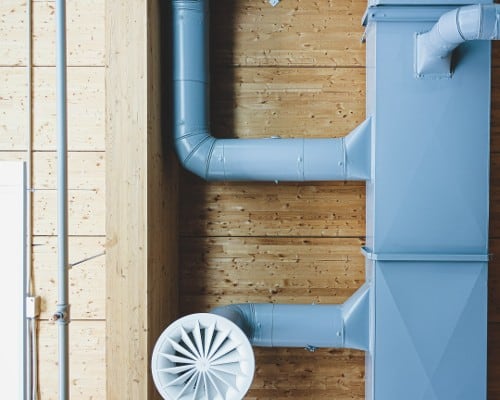Welcome to the River Valley. With winter setting in and your furnace system waiting on its yearly maintenance, your manual may have called for you to check your pressure switch. If you’re like most homeowners, you might be asking, “Where is the pressure switch located on my furnace, and what does it do?”
Never fear; the team at River Valley is here to give you some insight. In this post, we’ll unveil the mystery of the pressure switch. Spoiler alert: it’s a vital piece of the puzzle that ensures your home stays warm and, more importantly, safe!
Read below to learn more. If your furnace needs repair, just contact our team.
What is a pressure switch, and where is it?
Your pressure switch is nestled within the heart of your furnace, often located near the draft inducer motor. It’s a key component that kicks off the heating process.
To find it, look for a small, metallic piece, usually circular or rectangular, with a plastic or rubber tube emerging from it. While it might be hidden, your furnace wouldn’t be the same without it.
Pressure switches and their function
This device is small, but it’s an important safety feature that monitors the pressure levels within your heating system.
How? Well, as your furnace starts up, the draft inducer motor begins to remove exhaust gasses that may be lingering from previous cycles. It’s like your furnace taking a deep breath before plunging into its work. As this happens, the pressure switch springs into action, ensuring there’s enough air flowing through the furnace for it to operate safely.
If the pressure levels are off, the switch shuts down the furnace to prevent potential safety risks. It’s as important as it sounds! The pressure switch helps ensure your furnace stays safe and efficient.
If your device fails to do its job, you run the risk of higher-than-normal pressure in your furnace – a hazard to your safety.
Signs of a faulty pressure switch
Your pressure switch is a major part of your furnace’s operations. But what happens if something goes wrong with it? Here are some signs your pressure switch may need repair:
- Frequent Cycling: If your furnace seems to be starting and stopping, it could indicate a faulty pressure switch. This ‘short cycling’ could suggest the switch isn’t reading the pressure levels correctly.
- Your Furnace Doesn’t Start: If your furnace is unresponsive, this could be a sign of a pressure switch failure. The switch might be incorrectly sensing a problem, preventing the furnace from starting. It could also be an issue with your wiring – contact a pro to check it out.
- Your Furnace Runs Continuously: Alternatively, if your furnace runs continuously without reaching the desired temperature, this could also be a sign of a faulty pressure switch.
The pressure switch can also impact your furnace motor’s operation. A faulty switch could cause the motor to run continuously, leading to overheating and potential damage.
Now, let’s talk safety. If the pressure switch isn’t doing its job correctly, it could let the furnace run when it shouldn’t, like if the vents are blocked. This could cause harmful combustion gasses (i.e., carbon monoxide) to build up in your home. A broken pressure switch isn’t just annoying – it’s a safety risk.
Don’t fret. With regular maintenance and checks, you can be confident your furnace and all its components are operating safely and efficiently. If you notice any of the issues listed above, call one of our technicians to help you out. A DIY job may risk injury to yourself and your furnace.
Other components of your furnace
Now that you know what a pressure switch is, here’s a look at a few other key players in your furnace’s operation.
- Thermostat: Think of this as the brain of the furnace system; it tells your furnace when to start heating. You can adjust the dial to change the temperature your furnace is aiming for.
- Heat Exchanger: This is the heart of your furnace. As its name suggests, it warms incoming air before it’s sent to your home. It separates the combustion process from your indoor air, keeping you warm and safe.
- Blower Motor: This motor propels the warm air throughout your home’s ductwork. It keeps the air moving, ensuring that heat is distributed evenly.
- Air Filter: Your filter blocks unwanted dust, dirt, and allergens from entering your home, keeping your indoor air clean and your furnace running efficiently.
- Flame Sensor: This little device plays a big role in safety. It verifies that a flame is present when gas is flowing. If the flame suddenly goes out, the sensor signals to cut the gas supply, averting potential hazards.
So, next time you adjust your thermostat or hear the comforting hum of your furnace kicking in, remember the team of components working together, ensuring your home stays nice and warm throughout the winter.
River Valley: The best services for your HVAC system
Maintaining your furnace and understanding its components, including the crucial pressure switch, is essential for the safety and comfort of your home.
At River Valley, we specialize in keeping your heater running smoothly and efficiently. Our technicians have years of experience and training in dealing with all manner of HVAC problems.
Don’t wait for the signs of a faulty furnace to catch you off guard. Contact our team to schedule your furnace maintenance today with one of our professionals.

